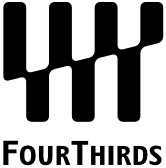The image sensor of Four Thirds and MFT measures 18 mm × 13.5 mm (22.5 mm diagonal), with an imaging area of 17.3 mm × 13.0 mm (21.6 mm diagonal), comparable to the frame size of
110 film.
[3] Its area, ca. 220
mm2, is approximately 30% less than the
APS-C sensors used in other manufacturers'
DSLRs; it is around 9 times larger than the 1/2.3" sensors typically used in
compact digital cameras.
The Four Thirds system uses a 4:3
image aspect ratio, like compact digital cameras. In comparison, DSLRs usually adhere to the 3:2 aspect ratio of the traditional
35 mm format. Thus, "
Four Thirds" refers to both the size and the aspect ratio of the sensor.
[4] However, the chip diagonal is shorter than 4/3 of an inch; the 4/3 inch designation for this size of sensor dates back to the 1950s and
vidicon tubes, when the external diameter of the camera tube was measured, not the active area.












